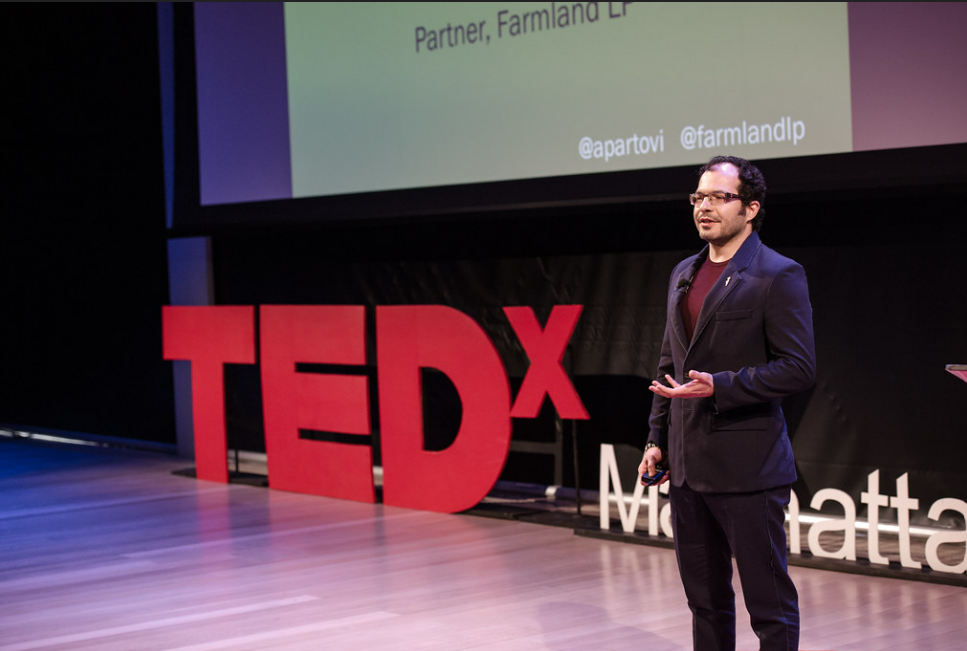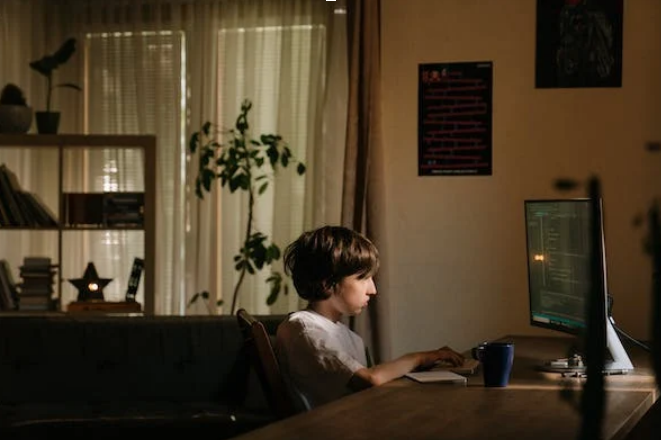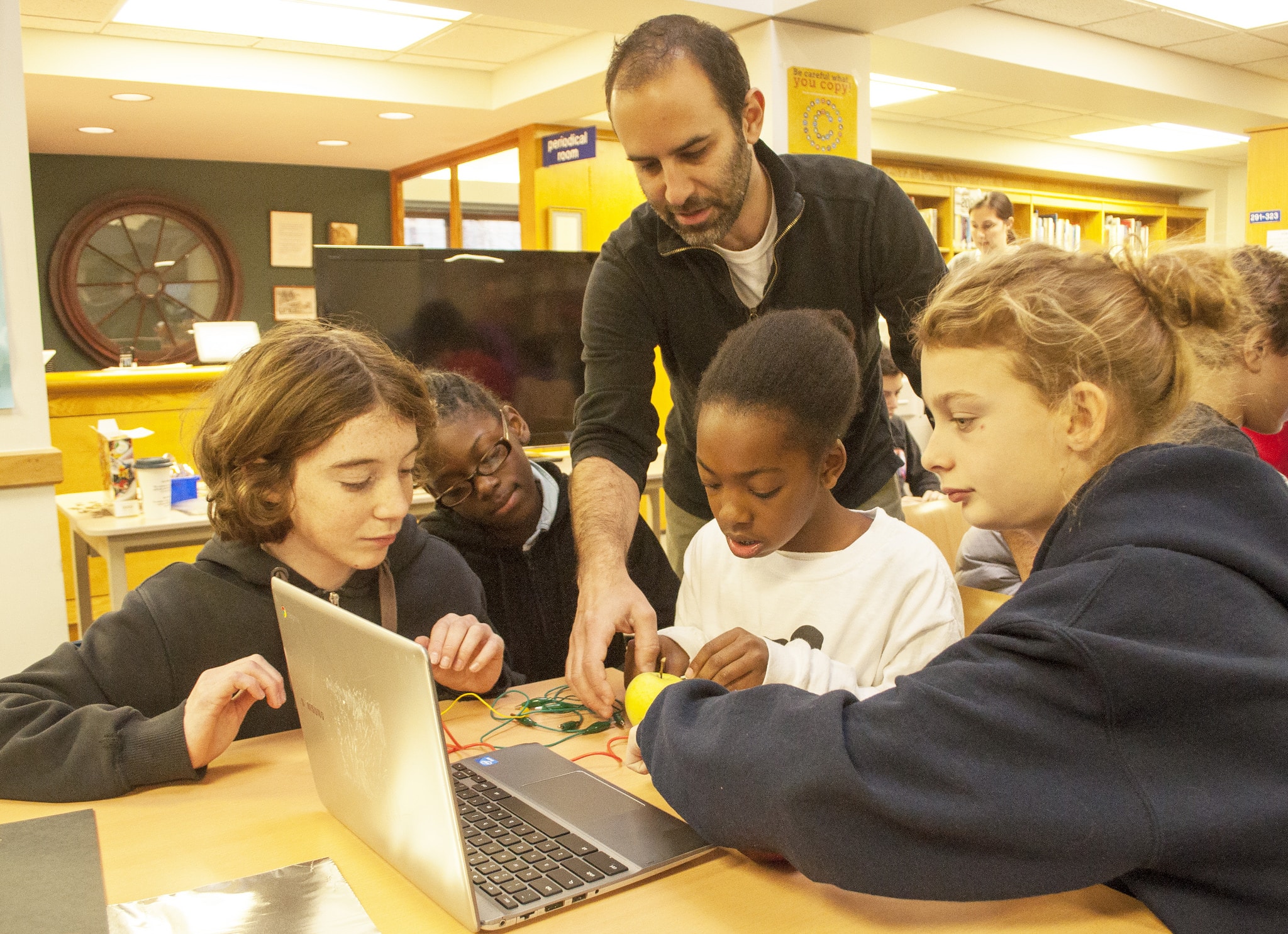The Hour of Code is an incredible annual event that encourages every school to spend one hour of class time coding. The vast adoption worldwide is remarkable. Did you know that over 100 million students have participated across 180 countries?
Let’s dig into this phenomenon and how your son or daughter can use it as a launching pad for STEM.
Hour of Code Debut by Code.org in 2013

Photo Source: TEDx Manhattan
Twin brothers, Hadi and Ali Partovi, successful tech entrepreneurs, started the non-profit in 2013. The message was simple: get millions of kids to try coding by creating a yearly school event. Hour of Code began that December, and it was an easy pitch for schools. Teachers could participate without needing any technology knowledge. Code.org would provide materials for all age groups, all the teacher needed to do was point kids to the website for a one-hour introduction.
President Obama kicked things off with a personal message to inspire kids to code:
The White House even held an event, hosting 20 students participating in a Code.org JavaScript tutorial. President Obama even wrote his first line of code! In fact, it was the first line of code written by any president. Turns out, it was pretty simple, Obama wrote moveForward(100) to move his character ahead by one hundred pixels.
Celebrity endorsements played a huge role in getting the word out about Hour of Code. Everyone from Mark Zuckerberg to Serena Williams has helped to promote the event, which reached millions of students.
I even hosted a free event that year at the HackerDojo, a tech coworking space in Mountain View. I knew not all the local schools would participate in Hour of Code, so I wanted to volunteer!
Great Curriculum and Content

Most of the event’s success is that kids enjoyed what they did during Hour of Code. Achieving this across a wide age range is challenging. It’s even harder to keep a student’s interest long-term and allow them to keep leveling up, but that isn’t necessarily the goal here. It is all about first hooking their interest.
Did you know that as of the 2021 Code.org annual report, they have spent $43.4 million on curriculum development? That includes lesson plans in several programming languages, unplugged activities, coding puzzles, and more. There are even videos that introduce the core programming concepts and key coding vocabulary, so the teacher or leader of the activity doesn’t need to know it themselves. Did you know that all of these resources are freely available on the internet at all times?
This curriculum is an excellent resource for kids learning to code, but it isn’t the most important factor on your coding journey.
There’s More to Coding Education than Curriculum

I always think it is funny when parents ask if we have our own curriculum for kids coding, as if that is what will separate one coding school from another. Yes, we do but don’t limit ourselves to projects we have created ourselves. Often, adherence to a single curriculum can hinder progress and innovation.
I guarantee you the local drop off coding school in your strip mall isn’t investing $43 million dollars in their tutorials. It is more effective to pick and choose amongst the best that are freely available, rather than sticking to your own limited-scope tutorials.
Meaning, for this particular student in this specific experience level, what is the best thing for them to work on? If that is a project Breakout Mentors has starter code for, fantastic; if it is something Code.org or another organization has produced, great; or f it doesn’t exist and the mentor needs to teach it on the fly, that is the most powerful learning experience. That’s why the Breakout Mentors 1-on-1 model heavily focuses on hiring top-notch coding mentors.
Code.org’s Massive Impact
In the last decade, the number of students interested in computer science has skyrocketed. Did you know that 181 thousand high school students passed one of the AP CS exams last year?
Code.org has also played a big role in expanding CS class access within schools. They lobby politicians at the state and national levels, for example, to approve CS as a science credit or to require each high school in their state offer at least one CS class.
They have also invested heavily in teacher training as well. High school Computer Science teachers are often the hardest for a school to hire: it is an in-demand skill and teaching is low pay. Therefore, if you can train a math or science teacher to teach CS, all the better. Plus you can make it easier on them with the right tools and curriculum.
Don’t Let the Momentum Go to Waste

Did your son or daughter enjoy the Hour of Code? Hopefully, it inspired a spark of interest in the subject, but don’t merely assume that this interest will automatically carry over into the summer or the following year.
Learning has momentum. If you let up, it is going to take a lot more work later to get back to the same spot. In this case, there likely wasn’t a ton of material learned in just one hour. The important momentum here is the excitement for coding.
Use this current excitement as an opportunity to keep learning. If your son or daughter can continue enjoying coding year-round, the interest will not die. Instead they will love it more as they master the basics of coding and unleash their creativity.
As Students Get Farther Along…
It is difficult to maintain the excitement in coding if students don’t feel they are advancing. Thus, the Hour of Code will have diminishing returns for an individual student the more years they do it. They won’t remember what they learned last time, and the result will not be as exciting.
That’s why letting kids keep learning when they show interest in coding is important. Time away can be frustrating to feel like you only get back to what you accomplished last time.
We have heard this from many parents who sign up kids for large summer coding camps. The first year is great, lot’s of excitement coming out of it and they are eager to sign up again next summer. Then they do one again the following summer, which goes fine, but they have no interest in going through the same thing a third time. Obviously it is a slightly different camp each time, but the student always feels like they are starting from zero since it has been a whole year without coding.
Get a Coding Mentor
It’s a truly wonderful effort the Code.org team is making to spread the message about the importance of programming education. I hope that the initial inspiration propels kids through a continual learning journey, progressing from beginners to intermediate and then advanced coders.
Plus, I hope they break free of the structured tutorial to make their own projects. Creativity is where true excitement can shine through. Breakout Mentors can help with project-based long-term learning, so please reach out to discuss the specifics about your son or daughter.
